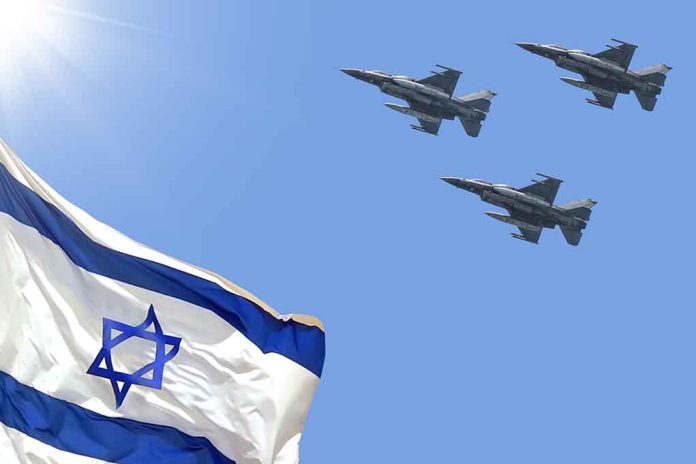
Israeli forces obliterate two Iranian F-14 Tomcats, potentially ending the operational life of Iran’s iconic fighter fleet that has struggled to survive for decades under strict U.S. sanctions and arms embargoes.
Key Takeaways
- Israeli airstrikes destroyed two Iranian F-14 Tomcats near Tehran, further depleting Iran’s already diminished air force capabilities.
- Iran has struggled to maintain its fleet of aging F-14s, originally purchased before the 1979 Islamic Revolution, through cannibalizing parts and black market procurement.
- The iconic fighters, made famous by the movie “Top Gun,” were reportedly positioned to intercept Israeli aircraft during recent hostilities.
- These strikes appear to be part of Israel’s broader strategy to systematically dismantle Iran’s air defense capabilities, potentially marking the end of the F-14’s service in Iran.
- Iran had been seeking Russian Su-35s as replacements, but faces significant challenges in modernizing its air force amid ongoing regional conflict.
Israel’s Precision Strikes Against Iran’s Tomcats
The Israel Defense Forces (IDF) released infrared targeting footage showing the destruction of two F-14A Tomcat fighters sitting outside hardened aircraft shelters at Mehrabad International Airport in Tehran. These precision strikes form part of Israel’s broader campaign to methodically dismantle Iran’s air defense capabilities, specifically targeting what remains of Iran’s once-formidable F-14 fleet. According to military analysts, the strikes were executed with remarkable precision, suggesting Israel’s intelligence apparatus had pinpointed these specific assets as part of a larger strategy to neutralize Iran’s ability to defend its airspace.
“An Israeli Air Force drone struck and destroyed two Iranian F-14 fighter jets at an airport in Tehran,” revealed IDF Spokesman Brig. Gen. Effie Defrin in a press conference.
The Last Days of Iran’s F-14 Fleet
Iran originally acquired 79 F-14 Tomcats from the United States before the 1979 Islamic Revolution, making it the only foreign operator of the sophisticated fighter. Following the revolution and subsequent U.S. sanctions, Iran has struggled to maintain these aircraft, relying on cannibalizing parts from grounded jets, reverse engineering components, and black market procurement channels. Despite these efforts, the number of operational Tomcats has steadily declined over the decades. Current estimates suggest Iran may have had between a few to approximately 25 operational or partially mission-capable F-14s prior to the recent Israeli strikes.
“These jets were intended to intercept Israeli aircraft,” stated the IDF regarding the purpose of the targeted F-14s.
Strategic Implications for Regional Air Power
The destruction of these F-14s represents more than just the loss of two aircraft; it signifies the likely end of an era for Iran’s air force. The F-14 Tomcat, a 55-year-old fighter design retired by the U.S. Navy in 2006, has been the backbone of Iran’s air defense strategy for decades, particularly for protecting Tehran. With these strikes, Israel has demonstrated both intelligence superiority and long-range strike capabilities that effectively negate Iran’s attempts to maintain aerial defense parity in the region. Military experts believe this development will accelerate Iran’s desperate need to acquire modern replacements.
“The Israel Defense Forces (IDF) posted infrared targeting camera footage of a pair of F-14A Tomcat fighters being destroyed by air-to-ground munitions as they sat outside hardened aircraft shelters at Mehrabad International Airport in Tehran.”
Iran had reportedly been negotiating with Russia to acquire Su-35 fighters as replacements for its aging F-14 fleet. However, complications have arisen as some of these aircraft were instead exported to Algeria. The ongoing conflict with Israel has likely further complicated Iran’s ability to modernize its air force, leaving a significant capability gap in Iran’s defensive posture. President Trump’s administration has been monitoring these developments closely, as the power vacuum could alter regional security dynamics and influence America’s strategic interests in the Middle East.













